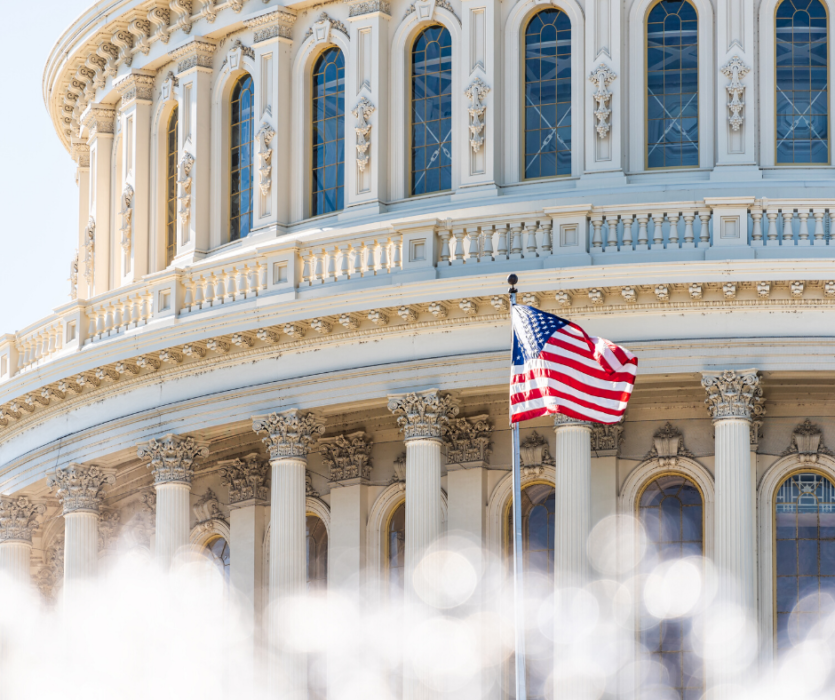
What Does the President’s 2021 Fiscal Budget Request Mean for Government Contractors?
March 18, 2020
By Vanessa Lansdale, courtesy of Jetco Solutions
The release of the President’s fiscal 2021 budget request gives insight as to how government spending might look between different agencies from October 2020 – September 2021. From budget cuts to $1.1 billion for cybersecurity efforts, the fiscal 2021 budget request contains detailed information and gives a glimpse into future government spending. Let’s dive in.
Budget Increases
The following departments and agencies all had proposed budget increases from fiscal year 2020 in the President’s budget request.
-
The Department of Veterans Affairs
-
The National Aeronautics and Space Administration (NASA)
-
The Department of Homeland Security
-
The Department of Treasury
-
The Department of Defense
The most notable increase out of these departments was the Department of Veterans Affairs, which is up $12.9 billion from FY 2020. Insights into how this money will be spent include a new electronic health reporting system, a variety of IT upgrades, and funding for community care. NASA funding increased 12%, which would support a lunar mission and preparation for the exploration of Mars. The Department of Homeland Security could be seeing an increase in $1.6 billion, and funding would go to federal and critical infrastructure cybersecurity programs; creating 82 miles of barriers along the U.S.-Mexico border; and funds to hire 750 Border Patrol agents and 2,844 ICE law enforcement officers.
The Department of Treasury and the Department of Defense are also seeing significant increases in budget in the fiscal 2021 budget request. Included in the budget request is a proposal to return the U.S. Secret Service to the Department of Treasury. Currently, the U.S. Secret Service is housed in the Department of Homeland Security. The Department of Defense’s spending outlines funding for nuclear weapons, ballistic missile submarines, 10 battle force and unmanned ships, and $15.4 billion for a new space force.
Some other notable funding allocations from the departments listed above include $1.1 billion for the Department of Homeland Security’s cybersecurity efforts; $313 million for veteran suicide prevention initiatives; $14 billion for Department of Defense science and technology programs that support AI, 5G, cybersecurity, microelectronics, and hypersonic weapons; and $3.2 billion for the continued development of Army, Navy, and Air Force weapons variants.
Budget Decreases
The following departments and agencies all had proposed budget cuts from fiscal year 2020 in the President’s budget request.
-
The Department of Justice
-
The Department of State and Other International Programs
-
The Department of Education
-
The Department of Energy
-
The Department of Agriculture
-
The Department of Health and Human Services
-
The Department of Labor
-
The Department of Transportation
-
The Department of the Interior
-
The Department of Housing and Urban Development
-
The Corps of Engineers – Civil Works
-
The Environmental Protection Agency
-
The Department of Commerce
When diving into the proposed budget cuts, discretionary funds were the main budget cut along with a significant cut to the Department of Commerce. Down 48% from FY 2020, the Department of Commerce’s budget is cut primarily due to the end of the 2020 census count.
Highlights for funding in the other departments listed above include $5 million for the Department of Energy’s new Artificial Intelligence and Technology Office; $5 billion for the Department of Health and Human Services to combat the opioid epidemic; $755 billion in mandatory spending from the Highway Trust Fund; and $80 million for grants to support the assessment and remediation of brownfield sites.
What do these proposed changes mean for government contractors?
Overall, the proposed budget shows the President’s push toward increasing national defense using a requested $740.5 billion. Information technology upgrades, cybersecurity, 5G, and artificial intelligence are also at the forefront of importance in the budget as technology continues to grow in the 21st century.
Government contractors who are at the forefront of cybersecurity, IT, and creating weapons for national defense could see big payoffs according to the proposed FY 2021 budget. Additionally, government contractors should be focused on Cybersecurity Maturity Model Certification (CMMC) at the Level 1 threshold. Those that ignore or fail in this area will put themselves in jeopardy of not working on government contracts both as a prime and as a subcontractor. Government contractors who have experience and expertise in the cybersecurity domain related to CMMC may see many opportunities arise.
In total, the budget request has not increased from the 2020 budget, but the allocation of money has changed, reflecting the President’s priorities, which include national defense and cybersecurity. Congress still has the final say as to whether this budget will pass, but by looking at the information provided in the budget request, government contractors are provided greater insight as to how FY 2021 spending will look.